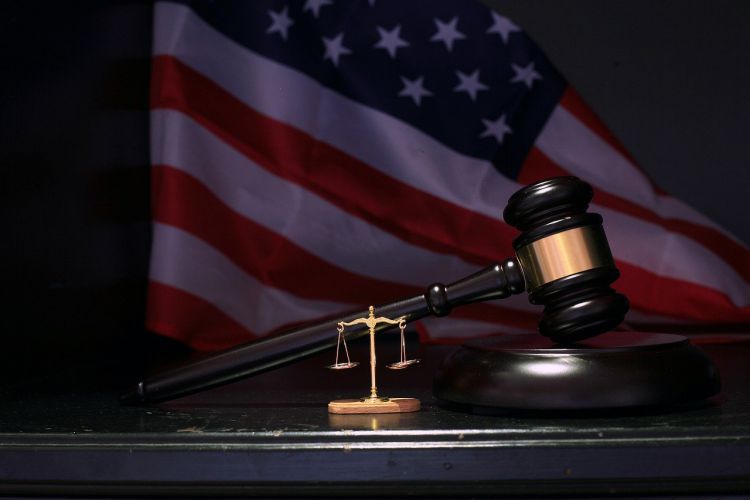 Ladies and gentlemen welcome to a riveting expedition into the intricate world of litigation! Today, we embark on a thrilling journey, tracing the remarkable path of a lawsuit from its humble beginnings as a mere complaint to the climactic verdict in the courtroom. Join us as we unravel the secrets behind the legal process, the twists and turns of courtroom drama, and the strategic maneuvers employed by both plaintiffs and defendants. From the drama of discovery to the intensity of trial, we will uncover the mysteries that shroud the legal system and gain an insider’s perspective on the complete evolution of a lawsuit. Let’s get started.
Ladies and gentlemen welcome to a riveting expedition into the intricate world of litigation! Today, we embark on a thrilling journey, tracing the remarkable path of a lawsuit from its humble beginnings as a mere complaint to the climactic verdict in the courtroom. Join us as we unravel the secrets behind the legal process, the twists and turns of courtroom drama, and the strategic maneuvers employed by both plaintiffs and defendants. From the drama of discovery to the intensity of trial, we will uncover the mysteries that shroud the legal system and gain an insider’s perspective on the complete evolution of a lawsuit. Let’s get started.
File the Complaint: Initiating the Lawsuit
At the outset of a legal dispute, the process begins with the filing of a complaint. This crucial step sets the wheels in motion for a lawsuit to take shape. The plaintiff, who is the aggrieved party, drafts the complaint, outlining the factual basis for the claim and the legal theories supporting it.
Careful consideration is given to identifying the defendants involved and specifying the relief sought. You can work with a legal expert to avoid issues along the way. For instance, an auto injury attorney can help you navigate the complexities of personal injury claims, ensuring all responsible parties are properly identified and held accountable for their actions. They will meticulously gather evidence, assess the extent of injuries, and quantify damages to accurately specify the relief sought on behalf of the injured party.
Once the complaint is prepared, it is officially filed with the appropriate court, commencing legal action. This initial stage establishes the foundation upon which the entire lawsuit will unfold, paving the way for subsequent procedural steps and legal arguments.
Service of Process: Notifying the Defendant
After the complaint is filed, the next critical step is ensuring that the defendant is properly notified of the legal action against them. This claim process, known as the service of process, is essential to uphold the defendant’s right to due process and allows them an opportunity to respond to the allegations.
Various methods can be employed to serve the defendant, such as personal service, substituted service, or service by mail, each subject to specific rules and regulations. Proper service ensures that the defendant is aware of the lawsuit and enables the case to proceed in a fair and transparent manner.
Respond to the Complaint: The Defendant’s Answer
Once the defendant has been properly served with the complaint, they are required to respond in a timely manner. The response, known as the answer, addresses each allegation made by the plaintiff and presents the defendant’s defenses and counterclaims, if any.
The answer is a crucial opportunity for the defendant to admit or deny the allegations and raise any legal arguments or affirmative defenses that might undermine the plaintiff’s claims. A well-crafted answer sets the tone for the rest of the lawsuit, shaping the issues to be litigated and guiding the direction of the case moving forward.
Discovery: Fact-Finding and Evidence Gathering
The discovery phase of a lawsuit is a comprehensive process where both parties have the opportunity to gather relevant facts and evidence to support their respective cases. Through various methods such as depositions, interrogatories, requests for production of documents, and requests for admissions, the parties seek to uncover crucial information.
Discovery helps to clarify the strengths and weaknesses of each side’s claims and defenses, facilitating informed negotiations and potentially leading to settlements. It also ensures transparency and fairness by preventing surprises at trial and promoting a more efficient resolution of disputes by encouraging parties to share information early in the litigation process.
Pre-Trial Motions: Shaping the Case
Before the trial begins, attorneys have the opportunity to file pre-trial motions to address specific issues and shape the trajectory of the case. These motions can have a significant impact on the outcome of the lawsuit.
Common pre-trial motions include motions to dismiss, seeking the court’s dismissal of the case based on legal deficiencies; motions for summary judgment, asking the court to decide the case in favor of one party based on undisputed facts; and motions in limine, which seek to exclude or limit certain evidence from being presented at trial. Pre-trial motions play a critical role in streamlining the issues for trial and clarifying legal arguments.
The Trial: Presenting the Case in Court
The trial phase is the heart of the lawsuit, where the parties present their evidence, witnesses, and legal arguments before a judge or jury. Opening statements set the stage by outlining each side’s position. Witnesses are examined and cross-examined, and evidence is presented to support or challenge the claims made in the complaint and the defendant’s answer.
Attorneys must navigate rules of evidence and procedure, while effectively conveying their case to the fact-finder. Closing arguments provide a final opportunity to persuade the judge or jury of the merits of the case. The trial process culminates in the ultimate determination of liability or innocence, shaping the verdict to come.
Verdict and Judgment: Reaching a Resolution
After the trial concludes, the fact-finder, whether a jury or judge, deliberates on the evidence presented and reaches a decision. In a jury trial, the jury’s verdict determines the outcome, while in a bench trial, the judge renders the judgment. The verdict or judgment may find the defendant liable or not liable, guilty or not guilty, or award damages or other remedies to the prevailing party.
This phase is the culmination of the legal process, resolving the dispute and providing closure to the parties involved. Depending on the outcome, post-trial motions or appeals may follow, potentially leading to further legal proceedings.
Appeals and Post-Trial Proceedings: Challenging the Decision

Following the verdict or judgment, either party may seek to challenge the outcome through post-trial motions or by filing an appeal. Post-trial motions, such as motions for a new trial or motions to set aside the verdict, aim to address alleged errors or issues that occurred during the trial.
Appeals, on the other hand, involve seeking a review of the trial’s legal and procedural aspects by a higher court. Appellate courts assess whether errors were made that affected the fairness or accuracy of the trial’s outcome. The appeals process offers a chance for parties to seek a different resolution or affirm their previous success.
The journey of a lawsuit, from complaint to verdict, is a complex and multi-faceted process that demands careful attention to legal strategy, evidence, and procedural rules. Each stage brings challenges and opportunities for resolution. Whether it concludes with a verdict, a judgment, or an appeal, the ultimate goal is to ensure justice and uphold the principles of fairness and due process. Throughout this legal voyage, the diligent efforts of attorneys, the impartiality of judges or juries, and the effectiveness of the legal system contribute to the resolution of disputes in society.




